12 Fun Math Puzzles for Kids
Math puzzles for kids are a great way to encourage a love of math, regardless of your child’s ability.

Author
Christina Levandowski
Published:
Nov 2024
Key takeaways
- Math puzzles help children develop life skills – Math puzzles build confidence and critical thinking skills that help kids figure out problems in everyday life.
- There are a variety of math puzzles available – Whether your child loves number games or prefers to play with shapes, there’s a math game to engage any child.
- Math puzzles can make learning math fun – Math puzzles are more like games than tedious math problems, which makes them much more fun for kids.
While some kids absolutely love math, many struggle with it. This struggle can make learning math difficult, and sometimes even deter kids from doing their homework or participating in class.
But you know what almost every kid loves? Puzzles! By combining math lessons with logic puzzles, you can teach essential skills without kids even realizing that they’re learning! Let’s take a peek at some fun math puzzles for kids.
What are math puzzles?
Math puzzles are challenges that require math skills and logical reasoning to solve. They are great tools to help children learn basic math concepts in a fun way.
Some of the most versatile math puzzles include:
- Brain teasers
- Math riddles
- Number puzzles
Teachers can use math puzzles in the classroom, but they can also be useful at home, especially with careful guidance from a parent or guardian! Another plus: math puzzles keep the brain active, helping kids develop cognitive skills beyond mathematical reasoning.
Benefits of math puzzles
Math puzzles don’t just help kids learn to enjoy math. They also help them to develop important life skills.
Below are some of the ways that math puzzles aid child development:
- Math puzzles boost mental math skills. Math puzzles require kids to perform simple math problems in their head. In the beginning, they might feel more comfortable using a pen and paper to work out the problem. However, over time, you should notice your child using their memory and their critical thinking skills to solve puzzles in their head.
- They foster problem-solving skills. Math puzzles challenge children to think creatively about the problem they’re facing. This skill can be transferred to everyday activities, such as decision-making and even managing emotions.
- Many math puzzles enhance logical reasoning. When playing math puzzles, children need to follow a set of specific rules or steps, to come up with the correct answer. This process helps children to organize their thoughts.
- They help students build persistence and patience. Math is a concept that many children find difficult to grasp. Even worse, they can find it boring. Math puzzles add a fun element that encourages children to persist at a problem because it feels more like a game than a chore.
Types of math puzzles
There are as many math puzzles as there are different types of learners, which is amazing! Take a look at the different types of math puzzles to see which one your child might enjoy the most:
Number puzzles
Number puzzles are very similar to any other puzzle your child might enjoy. The main difference is that there is an added number element. They have a range of numbers in different rows and columns, often with blank spaces to be filled in. Children need to work out the specific number pattern to solve the puzzle.
Shape puzzles
Shape puzzles use different shapes to encourage logical thinking. They generally work by getting children to understand the characteristics of a shape and fitting them into a larger image or design.
Alternatively, shapes can replace numbers in a math problem, with each shape representing a different number. To solve the problem, children are given certain information and they need to work out the number that each shape represents.
For example:
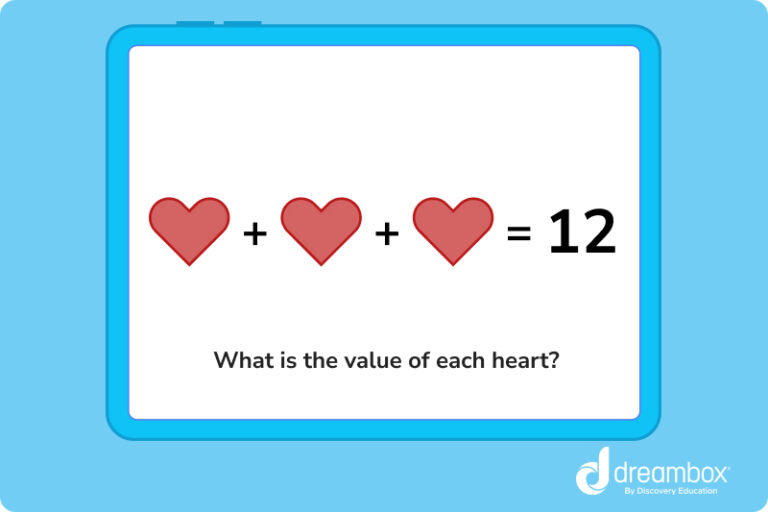
In this example, each heart represents the number 4 because 12÷3=4.
Table of contents
Get math practice with DreamBox!
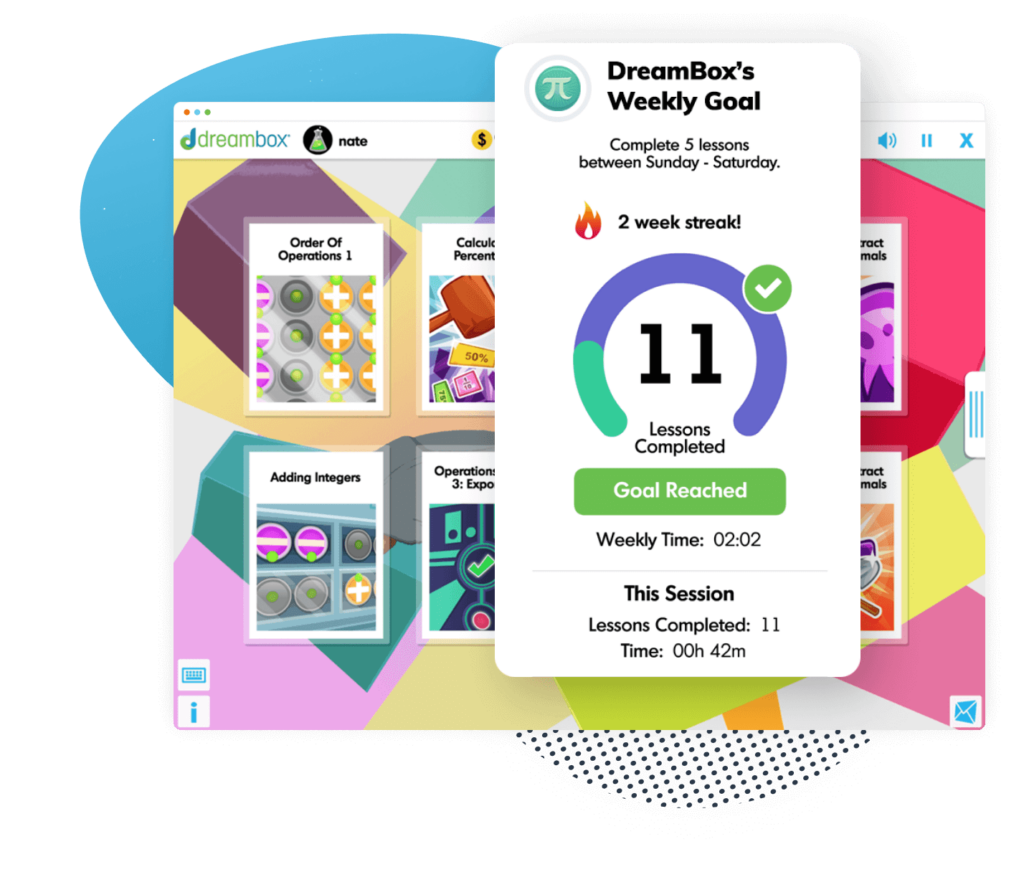
The math program that drives results
Get started today!
DreamBox adapts to your child’s level and learning needs, ensuring they are appropriately challenged and get confidence-building wins.
Logic math puzzles
Logic puzzles require children to use logical thinking and deduction to work out the answer. They can range from simple brain teasers to more elaborate spatial problems. However, the concept remains the same.
For example, students might be given a scenario like this:
You have 14 pairs of socks altogether but 7 pairs are in the washing basket. How many are left in your drawer?
Students would need to deduct 7 from 14 to find the answer, which is 7.
Sequence and pattern puzzles
Sequence and pattern puzzles are brain teasers that help children learn basic math skills. The idea is for children to understand the pattern of shapes or numbers that have been provided, to find the next one in the sequence.
For example:
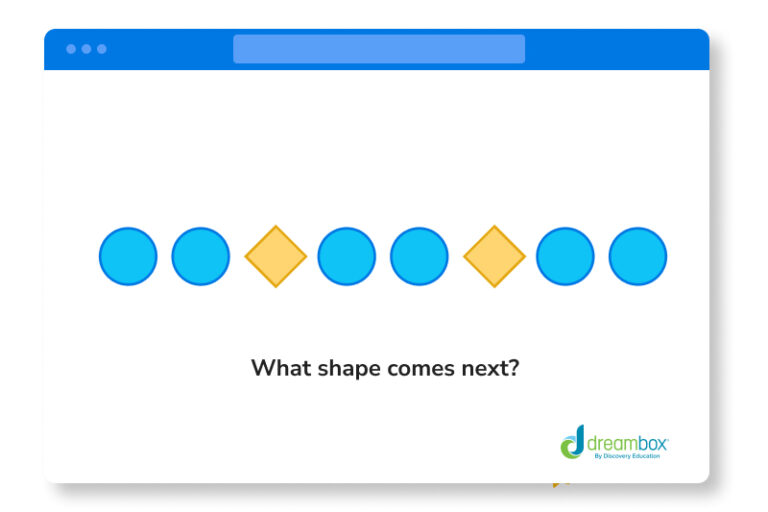
The next shape in this sequence is a diamond (because the sequence goes circle – circle – diamond.)
Our 12 favorite math puzzles
Now that we know the basic types of math puzzles, it’s time to get into specific games. Encourage your child to work through each problem step by step. You might be surprised at how much fun they have!
1. Sudoku
Type of puzzle: logic math puzzle
In a Sudoku puzzle, the aim is to fill in the missing numbers in a 9 x 9 square. Each row, column, and block should contain the numbers 1-9 without any repetitions. For younger children, different colors or shapes can be used to explain the concept.
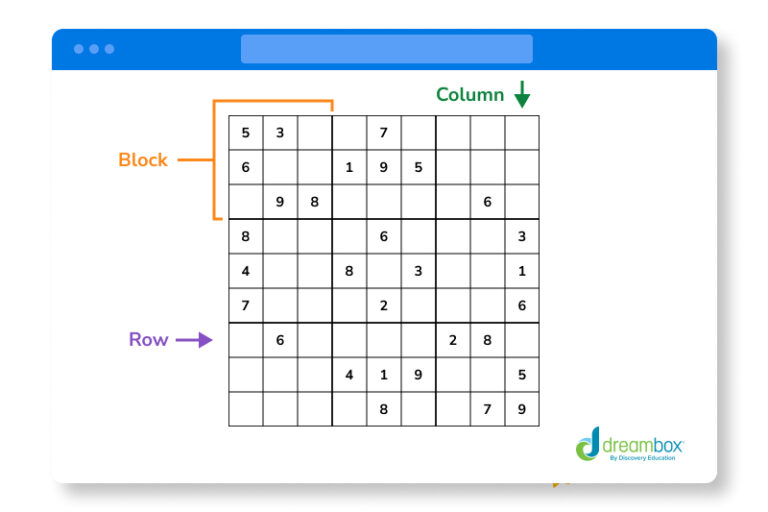
2. Magic square
Type of puzzle: number puzzle
The aim of a magic square puzzle is to fill in the blank cells, just like Sudoku. However, the sum of each row, column, and diagonal needs to add up to the same answer.
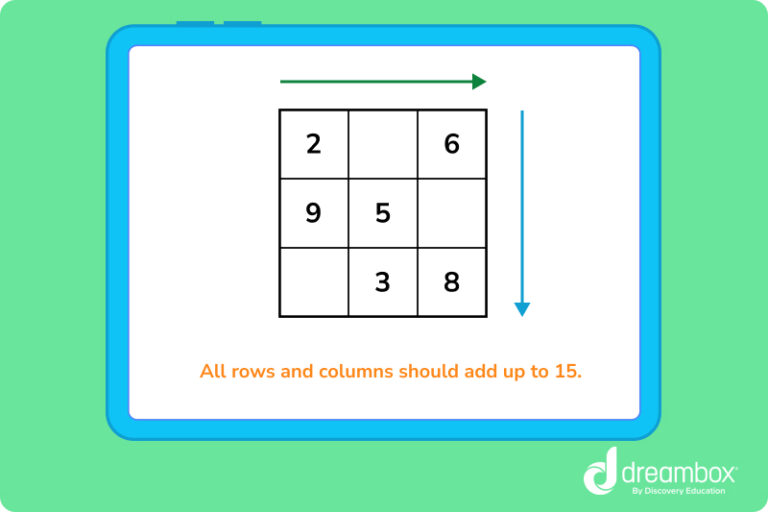
3. Math riddles
Type of puzzle: Logic math puzzle
In math riddles, children are given scenarios that require deductive reasoning to solve. The goal is to use logic and ‘read between the lines’ to get to the correct answer.
Here is an example of a math riddle:
When my dad was 31 years old, I was 8 years old. Now he is twice my age. What is my age now?
Answer: 23
The difference between the two ages is 23 years because 31 – 8 = 23. So, the child must be 23 years old for her dad to be twice her age.
If you work out the difference between 8 and 23, the answer is 15 (23-8=15).
31+15=46, so her dad would be 46, which is 2×23.
4. KenKen
Type of puzzle: number puzzle
KenKen is a grid-based game similar to Sudoku. The main difference is that KenKen requires arithmetic to solve. The aim is to fill in the blank cells in a grid using only certain numbers.
For example, in a 4×4 grid, you can only use numbers 1, 2, 3, and 4. In a 6×6 grid, all numbers between 1 and 6 can be used. Numbers can’t be repeated in any row or column but can be used elsewhere.
Unlike Sudoku, a KenKen square is further broken down into smaller boxes, known as cages. Within these are mini math problems that need to be worked out in order to solve the whole puzzle. The great thing about KenKen is that children can start with a small 3×3 puzzle and work up to a larger one once they get the hang of it.
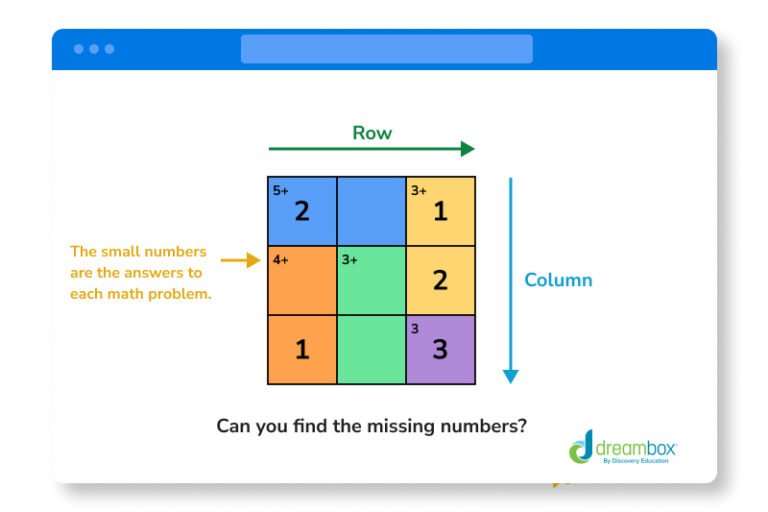
5. Domino puzzle board
Type of puzzle: number puzzle
A domino puzzle board combines the fun of dominos with math. The aim is to fit all 28 domino pieces onto a puzzle board. Each space on the board has a number, but a domino can only be placed on that space if the numbers on the domino piece can be multiplied to equal the board number.
Simpler versions of this game include creating a domino square, where all sides add up to a certain number:
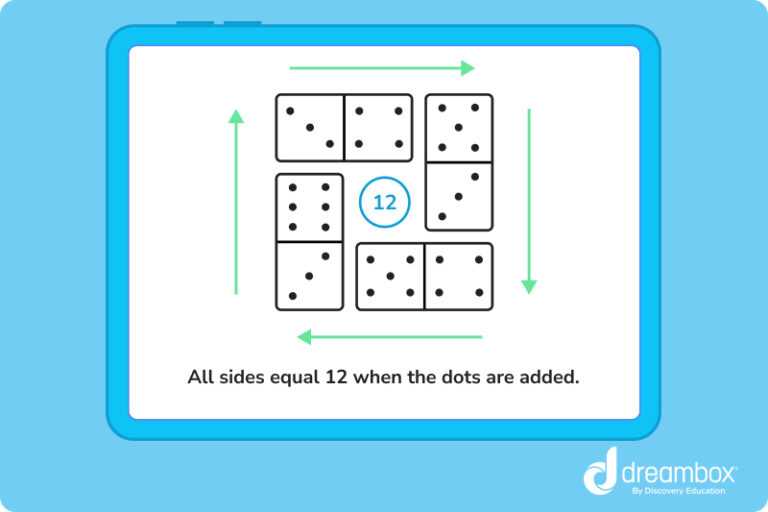
6. 2048
Type of puzzle: number puzzle
2048 is an online ‘sliding block’ puzzle played on a 4×4 grid. The object is to combine the numbers on the grid by sliding them up, down, left, or right, to reach the number 2048. When two blocks with the same number touch, they merge to create a bigger number. The game is won when you reach 2048.
Play online here.
7. Kakuro
Type of puzzle: logic math puzzle
Kakuro is a crossword puzzle using numbers. Each ‘word’ needs to add up to the number provided in the clue. Only single digit numbers can be used (1-9) and a single number can’t be repeated in a ‘word’.
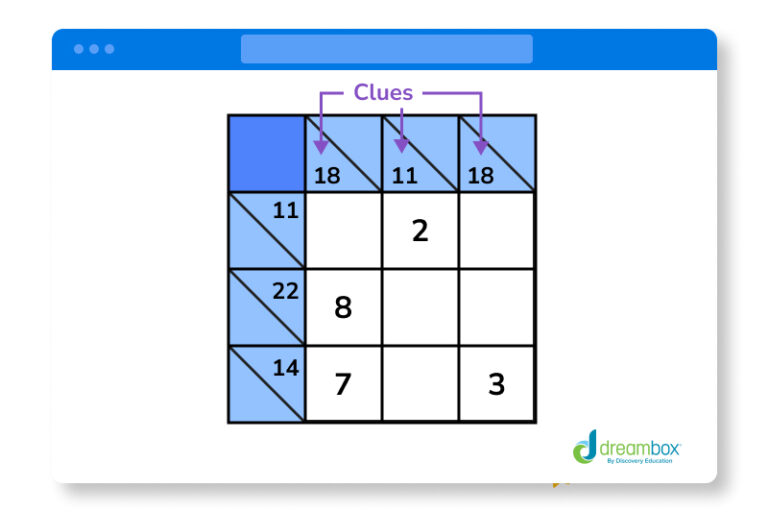
8. Join the dots
Type of puzzle: logic math puzzle
Join the dots is a game that helps children see patterns in a group of dots, using their logical skills. Nine dots are arranged in a square and the object is to connect all the dots using four straight lines without lifting your pencil. This may sound like a simple concept, but it requires a bit of ‘out-the-box’ thinking!
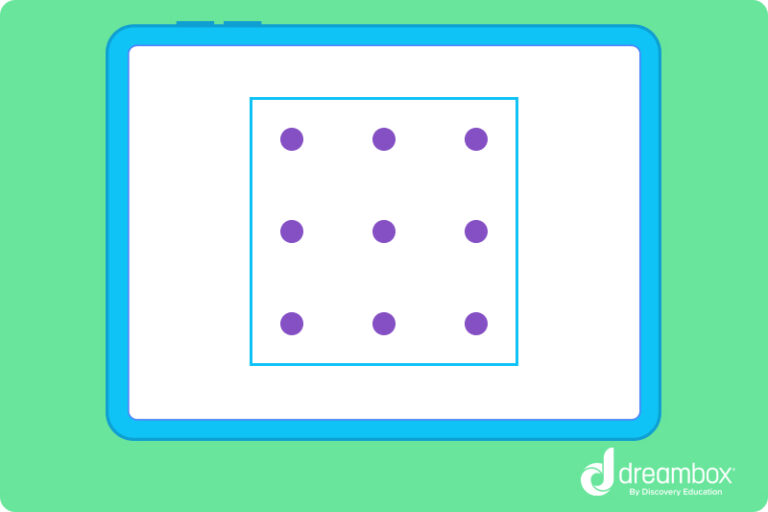
9. Tangram
Type of puzzle: shape puzzle
Tangram is a Chinese puzzle game that consists of a square cut into seven geometric shapes. The idea of the game is to rearrange the pieces to make other shapes, just like a puzzle! You are given an image of a certain shape and the goal is to rearrange the pieces to create this shape or pattern without overlapping any of the pieces.
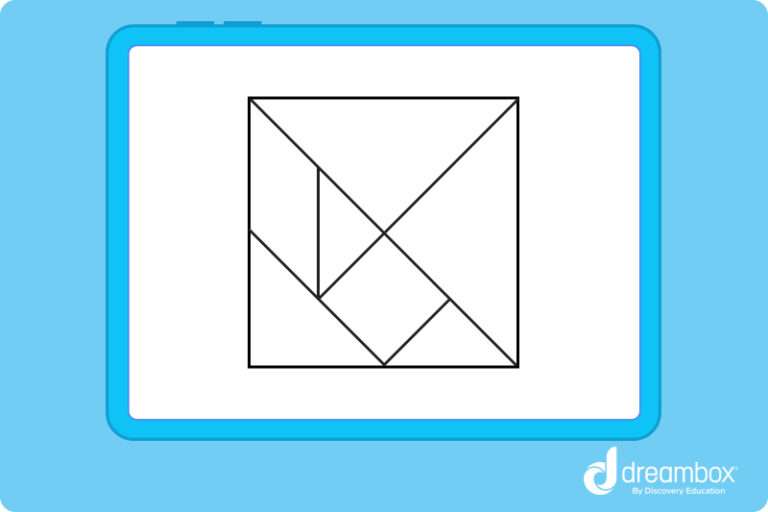
10. Str8s
Type of puzzle: number puzzle
Str8s is a simple logic game played on a grid, with numbers separated into compartments. The aim of the game is to create ‘straights’ within each compartment. This means you need to have consecutive numbers but they don’t need to be in order, such as 3, 4, 5, or 7, 9, 8.
In Str8s, there are also numbers in black squares, which can’t be used in that particular row or column. Just as in Sudoku and KenKen, the same number can’t be used more than once in any row or column.
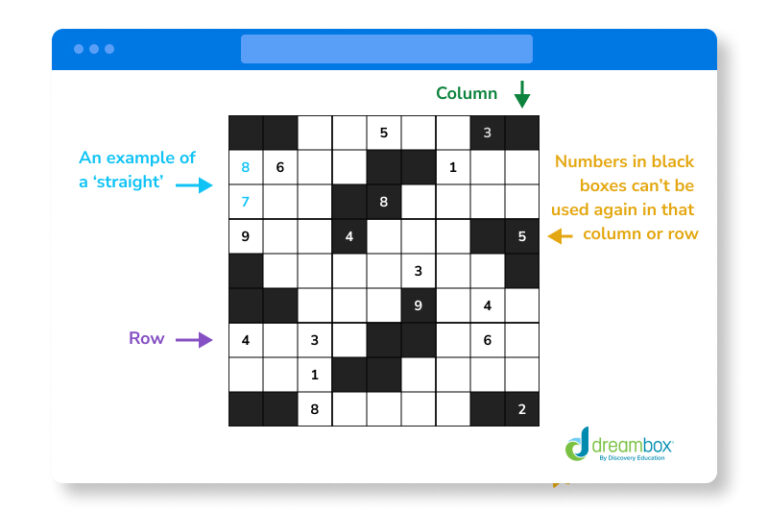
11. Tower of Hanoi
Type of puzzle: logic math puzzle
The Tower of Hanoi is a logic-based game created by mathematician Edouard Lucas in 1883. There are disks of different sizes stacked on top of each other on a pole. There are also two additional poles that can be used when needed.
The aim of the game is to have all of the disks stacked in the same order on the third pole, without ever putting a larger disk on top of a smaller one.
The minimum number of moves needed to complete the puzzle depends on the number of disks you have. The equation used is:
Number of disks x 2 + 1 =
So, at least 7 moves are needed to complete the puzzle below because there are 3 disks (3 x 2 = 6, 6 + 1 =7)
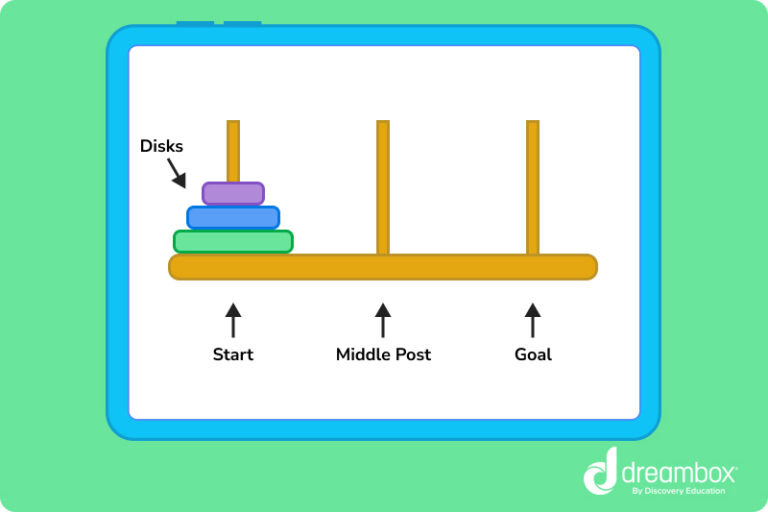
12. Number series
Type of puzzle: sequence and pattern puzzle
In this game, children are given a certain set of numbers in order. Their job is to work out the sequence being used to continue the pattern.
For example, if you had the numbers 3, 6, 9, and 12, the next answer would be 15, because the numbers are following the 3 times table.
FAQs about math puzzles for kids
The great thing about math riddles is they use real-life scenarios that children can relate to. In addition, they vary in complexity so they can be used for children of all ages. Here are some fun (and educational) math riddles for you to try out:
1. If there are 4 apples and you take away 3, how many apples do you have?
(Answer: You have 3)
2. Which number stays the same no matter how many times you multiply it?
(Answer: 0)
3. I am more than 10 but less than 15. I am one more than the number of months in a year. What am I?
(Answer: 13)
4. Fill in the blanks; 4, 8, 12, _, 20, _, 28
(Answers: 16 and 24)
Math logic puzzles are a common form of math puzzles, involving logical reasoning. Traditional logic puzzles generally have a grid of numbers, with certain numbers missing that need to be filled in. Sudoku is one of the most popular logic puzzle games. Other examples include brain teasers, elimination grids, and arithmetic puzzles.
Math puzzles make learning math more enjoyable. They also tend to reduce the fear associated with math equations because they are more like games than exam questions. Children that regularly practice math puzzles can develop a range of transferable skills including problem-solving, logical reasoning, and mental arithmetic.
Take at home math practice to the next level
Empowering parents and educators to make math practice more impactful. Plus, your kids will love it.


